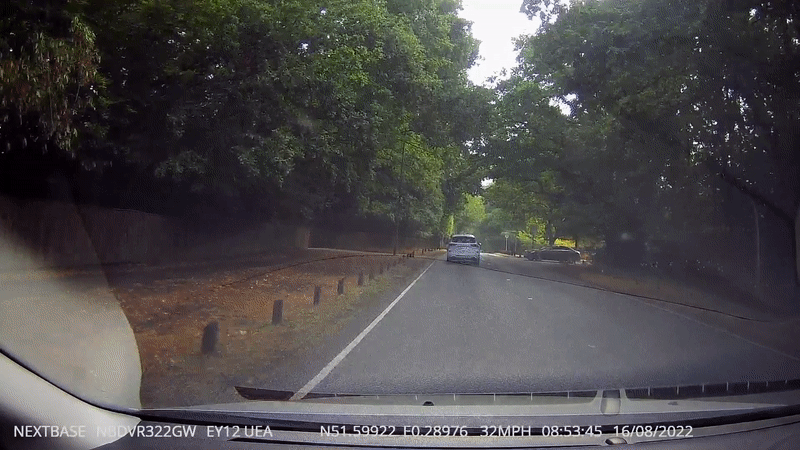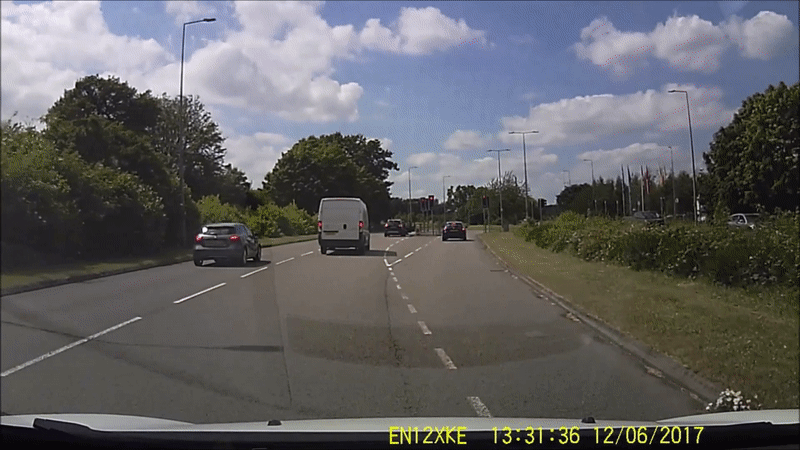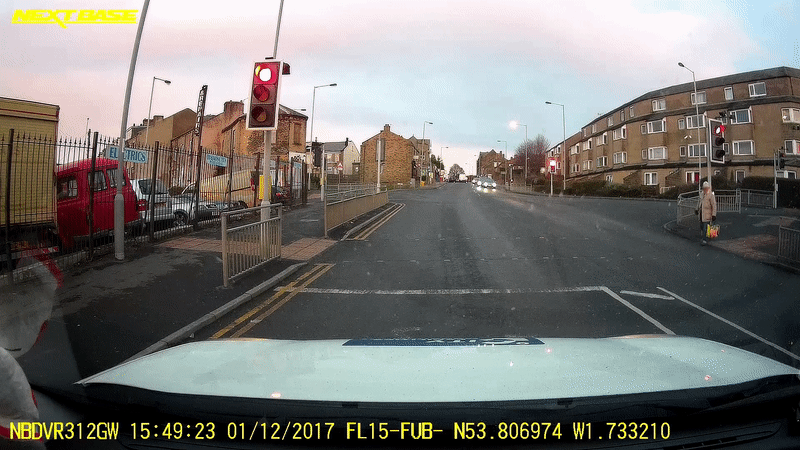Road Rage Epidemic: Nearly 1 in 6 Drivers Admit to Being Victims
In recent years, "aggressive driving" or “road rage” has gained widespread attention and is a significant focus of safety programs on the road. The National Highway Traffic Safety Administration ( NHTSA) defines aggressive driving as when someone commits several traffic offences that put others in danger or risk damaging property. Examples of these offences include tailgating, changing lanes without signalling, running red lights, or passing improperly.
In a recent study conducted by the AAA Foundation for Traffic Safety, nearly 80% of drivers expressed significant anger, aggression or road rage behind the wheel at least once in the 30 days prior to the study. Those who took part in the study admitted to the following;
- Aggressive lane switching or tailgating: 26% (57 million drivers)
- Making rude gestures or honking at other drivers: 32% (71 million drivers)
- Driving 15 mph over the speed limit on a freeway: 48% (106 million drivers)
- Running a red light: 31% (68 million drivers)
- Passing in front of a vehicle at less than a car's length: 22% (49 million drivers)
- Speeding up when another vehicle attempts to overtake you: 25% (55 million drivers)
- Following closely behind the vehicle in front to prevent others from merging: 34% (75 million drivers)
- Merging into traffic even when another driver is trying to close the gap between vehicles: 28% (62 million drivers)
At Nextbase, our dash cams are capturing examples of these road rage characteristics worldwide from the point of view of those who are falling victim. In light of this, we have conducted our own study to determine the extent of motorists witnessing or being involved in road rage and to identify the types of drivers typically responsible for such incidents.
Key findings;
- 59% of drivers have fallen victim to road rage
- Tailgating has been revealed as the most common act of road rage (27.21%)
- Almost three in every four male drivers admit to being involved in road rage incidents.Just over 1 in five females admit the same
- Nearly half of aggressive drivers are Millennials (46.65%)
- Ford drivers incite road rage the most (9.25%)

Videos taken on a Nextbase Dash Cam
Six in every 10 drivers have fallen victim to road rage
We asked drivers if they had ever fallen victim to road rage. The responses show that 59% of drivers said they had. According to a recent report, law enforcement in the United Kingdom received 2,282 road rage incident reports in 2021. By the end of 2022, this figure surged by 40% reaching 3,208 cases, so it’s hardly surprising to see so many drivers have been involved in road rage incidents. From a United States perspective, during the initial quarter of 2023, approximately 286 million vehicles were in operation on the roads. This could suggest that around 168.7 million drivers have already fallen victim to road rage already this year.
More than a quarter of road rage incidents involve tailgating

To further understand the growing problem of road rage, we also asked what type of road rage drivers had experienced. According to drivers, the most frequent example of road rage is tailgating, which is the act of following another vehicle too closely, which is dangerous and can lead to accidents. This form of road rage was flagged by more than a quarter (27%) of respondents.
A report published by The American Automobile Association’s Foundation for Traffic Safety in 2016 found that rear-end collisions accounted for over 23% of all traffic accidents, which shows how dangerous tailgating can be.
Some may say that tailgating isn’t a form of road rage and perhaps down to “poor driving”. However, according to the same report, 104 million US drivers admitted in a survey to “tailgating on purpose”. The report cites another study, which revealed that aggressive drivers “tend to speed, tailgate, switch lanes quickly, and have more accidents.”
This is reflected in our own survey results with just under one in five drivers (18%) stating that they’ve witnessed or fallen victim to other drivers “cutting in”, with “speeding” also chosen by one in six drivers as one of the forms of road rage they experience the most.
Millennials rank as the main culprits of road rage

Respondents to our survey revealed that Millennials, (29-43 years), as the drivers most likely to experience road rage, received nearly half of all votes (47%) compared to people of other generations. Gen X drivers (44-58 years) came second with 21% and Gen Z drivers (16-28 years) third with 20%.
It’s not the first time Millennials have been flagged as being unsafe on the road. In another AAA study conducted in 2017, it was revealed that close to half of Millennials admitted to running a red light when they could have stopped safely, while only 36% of other drivers did the same. The study also found that approximately 12% of Millennials believed it was okay to exceed the speed limit by 10 mph in a school zone, in contrast to 5% of other drivers who shared this view.
In fact, you can go back even further to a 2016 study by Ipsos, which states that around one in five Millennials said they often engaged in the road-rage-inducing practice of slowing down to annoy people who want them to move over.
The two oldest generations, Baby Boomers (those aged 59-77) and the “Silent” Generation or “Traditionalists” (those aged 77+), were deemed as the ones least likely to be seen experiencing road rage, according to our research.
A separate study investigating “self-reported aggressive driving behaviours” revealed those between the ages of 60-74 had the fewest number of self-reporting instances of “bumping” or “ramming” another car as well as the fewest instances of confronting other drivers. The 75+ category ranked the lowest for tailgating, yelling, honking, gesturing and cutting off other drivers compared to all other age groups.

Videos taken on a Nextbase Dash Cam
Almost three in every four male drivers admit to being involved in road rage incidents
Back in 2014, a study conducted by the American Psychological Association stated that ongoing research indicated that young males were more likely to commit acts of road rage. Fast forward nearly 10 years and we can reveal that those researches were on the right lines.
Possibly the biggest difference when reviewing our survey data is that over three-quarters of male drivers (78%) admit to having been involved in road rage incidents compared to just 18% of women admitting the same.
In the 2016 “self-reported” study referenced earlier, drivers were asked about whether they had committed various aggressive driving behaviors. The results found men admitted to these behaviors far more than women did and were found to outweigh women in all categories, such as ‘speeding’ where 52% of men admitted to the offences versus 44.6% of women.

Ford drivers incite road rage more than any other manufacturer
The final revelation our survey highlighted was that Ford drivers are involved in road rage incidents more than any other brand. Ford drivers topped the leaderboard with 9.3% saying they’ve witnessed road rage the most.
This finding correlates with a 2018 study conducted by law firm Your Legal Friend, which discovered that Ford cars proved to be the most accident-prone car brand with one involved in 16% of all accidents. They also found that Ford Fiesta drivers were involved in the most accidents compared to other cars, with the Ford Focus and KA both ranking in the top five.
Toyota drivers came close behind in second place in our study with 8.1%, with Volkswagen rounding off the top three with 6.7%.

Videos taken on a Nextbase Dash Cam
Eight tips for avoiding road rage from others
Dealing with road rage incidents can be quite unnerving, so here are a few tips from, Bryn Brooker, Road Safety Expert at Nextbase, to remember next time it occurs, so you can handle the situation confidently.
Videos taken on a Nextbase Dash Cam
1.Stay calm
The most important thing is to remain calm and avoid escalating the situation. Don't respond to aggression with aggression. Your calm demeanour can help defuse the tension.
2.Be tolerant and forgiving
Remember that other drivers may be having a bad day. Assume their behaviour isn't personal.
3.Do not engage
Avoid making eye contact, gestures, or responding to aggressive behaviour from other drivers. Engaging can provoke further anger.
4.Maintain distance
If following, increase your following distance to give yourself space in case the other driver's behaviour becomes reckless.
5.Move to a safe location
If the situation escalates, try to get to a public place like a gas station, police station, or a well-lit area with witnesses.
6.Document the incident
If it's safe to do so, take note of the other driver's licence plate, vehicle description and any distinguishing features. This information may be helpful in case you need to report the incident later.
7.Call the police if threatened
If you feel threatened or if the other driver's behaviour is extremely aggressive and dangerous, call the police and provide them with your location and the description of the other vehicle.
8.Capture your evidence
The police may ask you to provide supporting evidence for your case. Thanks to modern day technology, such as smart dash cameras , which not only capture what’s going on in front of your vehicle but also behind it and inside the cabin, you will have the footage needed no matter where they occur.
Methodology
The Nextbase survey was conducted between September and October 2023 and was answered by 1,391 drivers from all over the world. Supporting research was sourced from GoShorty, the Texas Department of Insurance, ScienceDirect and the American Psychological Association, linked throughout the copy. Dashcam footage sourced from Nextbase internal archives.

